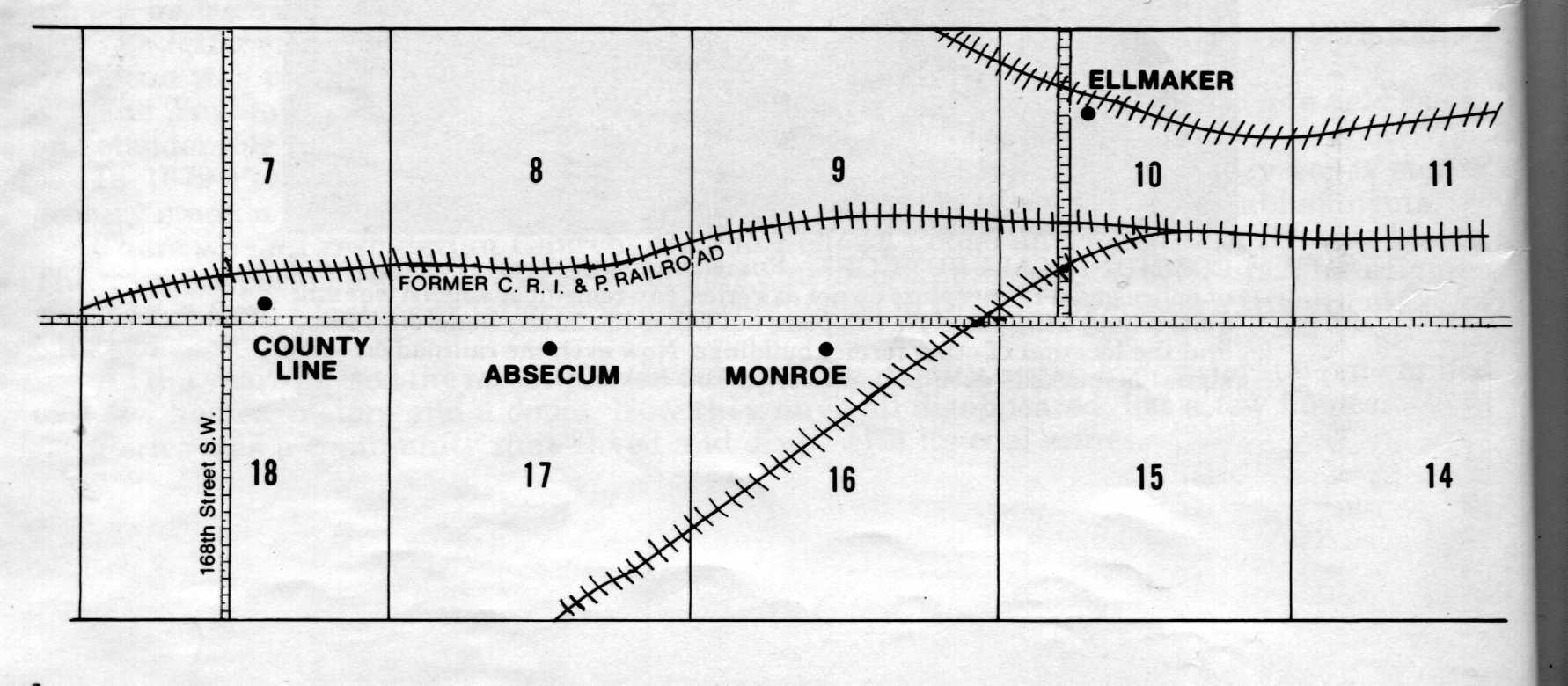 |
of Jefferson County |
 |
 |
of Jefferson County |
 |
Monroe
(Des Moines Township)
"MONROE. A town that never was. It existed only on paper.
Surveyed in 1840 by David Switzer and laid out for William Houghton, "proprietor,"
in southeast corner of Jefferson County, Iowa Territory. (Ledger, Mar.
17 1962)."
The above information was compiled by Mary Prill and
published in the Hawkeye Heritage, July 1967.
* * * * * * * * * * * * * * *
The following story was originally one of a number of articles in the Fairfield Ledger which was later included in the book Villages and Towns of Yester-year in Jefferson County by William R. Baker. We hereby include it on this page with the permission of the Fairfield Ledger.
Names mentioned in this article are as follows:
William Houghton, John Rap, Daniel H. Houghton
When some farmer began field
work west of Libertyville this past spring (1981), he may have been plowing
down the middle of Main Street in Monroe, Jefferson County.
Such a community was platted
in the southwest part of Jefferson County, Iowa Territory, in 1840. According
to records in the county recorder's office, the town of Monroe was surveyed
and laid out for William Houghton,
proprietor of the town, and a plat of the town's nine blocks was filed
July 21, 1840.
Following is the record filed with the plat:
"The town of Monroe is
situated in the southwest corner of Jefferson County, Iowa Territory, on
the unsurveyed lands of the United States beginning at the northwest corner
of the public square at a stone set. The lots are 60 feet front and 120
feet deep."
The town's four east-west streets
were named Harrison, Washington, Van Buren and Johnson. The north-south
streets were named Lafayette, Jefferson, Jackson and Tyler.
The record stated the survey
was made by John Rap,
surveyor in and for Jefferson County for William
Houghton, proprietor of said town.
There is no evidence in
the files as to whether the town was ever occupied, or any indication as
to how long it remained on the records as a town.
There was no detailed legal description of
the land on which it may be actually located.
The following year William
L. Houghton conveyed 320 acres of land to Daniel
H. Houghton for a sum of $150. But even the record of the conveyance of the land failed to give a description that can be followed today.
It is possible the land
sold by William Houghton on February 20, 1841, was the same land on which
he had hoped to establish his 'dream' town of Monroe.
From all indications, Monroe was an early
settlement that never materialized.
But others did. Absecum
and County Line were both early settlements that followed and were busy
communities.
THEY'RE NOW ALL GONE--This map shows the approximate locations of three early settlements in Jefferson County located west of Libertyville, and a station stop on the Peavine Railroad. Monroe was platted but never materialized. Absecum was a stage coach stop, and County Line "grew up" when the railroad arrived. There is no trace left of any of the settlements mentioned.
